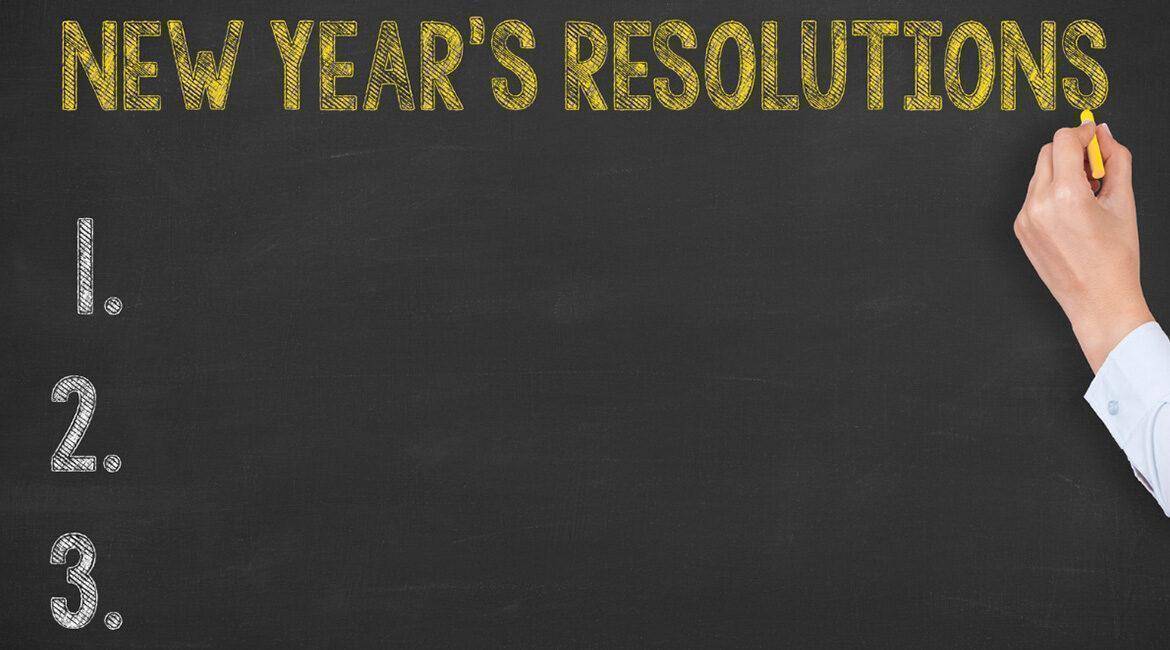As we start the new year, resolutions may begin to fade. For most people, it is difficult to persevere when setting goals. However, if you reflect on past failures in pursuing resolutions in a constructive way, you might gain insight. This can help improve your success rate with resolutions.
The keyword is “constructive”. The most important thing to avoid is to put yourself down because of “past failures”. Avoid self-labeling (e.g., “I’m not good at this”, “I can’t make it”, etc.). Also, avoid externalizing the blame or justifying what did not work.
Instead, focus on resolutions as a process with some realistic end goals. Also, be specific. Rather than expressing: “I want to lose weight”, think of “I want to lose 15 pounds in the next 3 months” by making the following changes in my life (e.g., going to the gym three times a week, getting a personal trainer, buying healthy food, avoiding goodies during mealtimes such as bread and dessert, etc.).
Also, as you embark on your journey of resolutions, accept that we are human and allow for some flexibility or “failures”. If you feel the temptation of having dessert, don’t start thinking negatively about yourself and giving up. Instead, look at the trends and keep the big picture in mind (e.g., “it’s true that I ate dessert yesterday, but I was able to avoid it for 4 days in a row”).
Making progress is not linear, it might involve some zigzagging and, it’s OK, as long as you keep a positive trend. As you “slip”, identify what factors contributed to this and then correct and adjust. You can replay in your mind how events unfolded (almost as a movie, scene-by-scene) and the thoughts and emotions attached to the deciding moments. This will give you a better understanding of risk factors, thoughts, and emotions that you can then correct or anticipate.
Try to understand, what is the source of my choice. Is there a thought (“I’ did bad today at work”), or is there an emotion or feeling (frustrated because something did not work the way it was expected)? It’s about finding the trigger(s). This will help you go deeper into causes and will provide more tools to overcome potential failures.
As you set new year’s resolutions try to focus. It’s best to have 1 to 3 resolutions than developing an extensive list of goals.

Too many goals usually end up overwhelming and increase the chances of failing and giving up.
The goals should also be prioritized and maybe it helps to roll out the goals in stages. In other words, rather than pursuing three different goals simultaneously, start with one, establish new behaviors, habits, lifestyle, and results (this might take 2-3 months), and then start the following goal.
Finally, make it fun! View the process as a fun experience that entails learning, exploring, and getting to know yourself better. As you start making progress, reward yourself. Treat yourself with little things (e.g., buying something relatively inexpensive, celebrating with friends, etc.). Positive reinforcement of healthy, new behaviors will help these changes stick.
In pursuing a new year’s resolution and having to dig deeper into what obstacles are interfering with achieving progress, you might want to involve a psychologist in your journey. This can result in accelerating insight and progress.
Say “yes” to your resolutions and say “yes” to continued growth!





